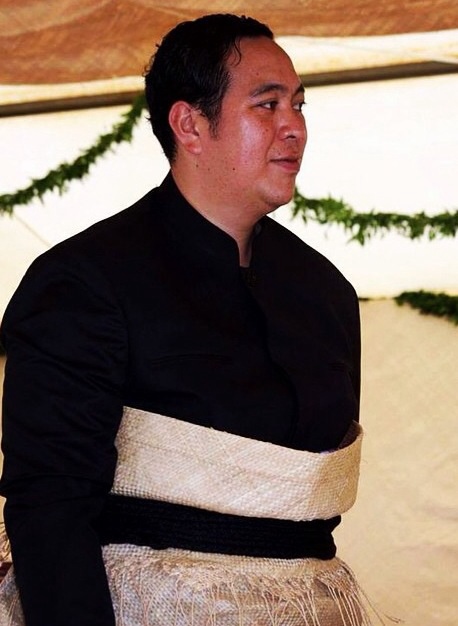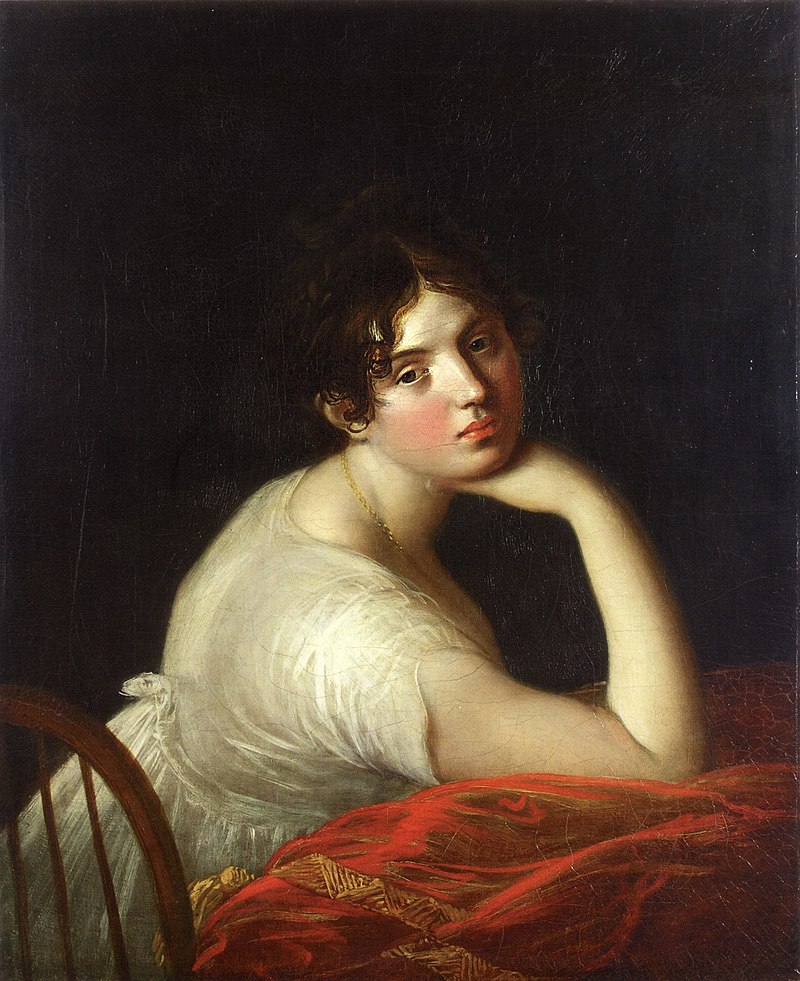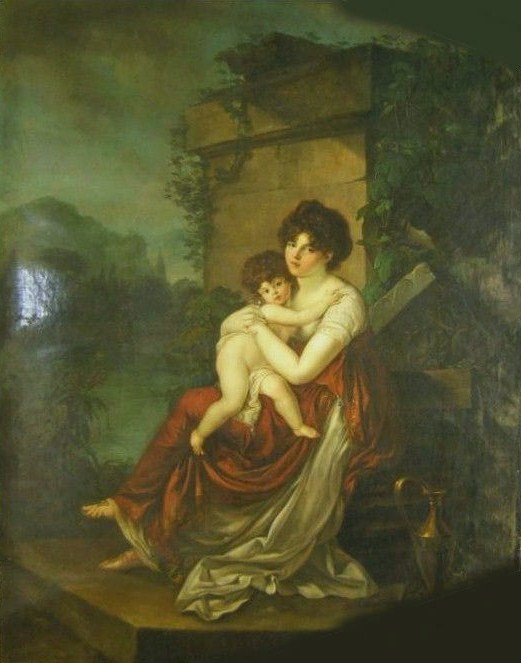by Susan Flantzer © Unofficial Royalty 2020
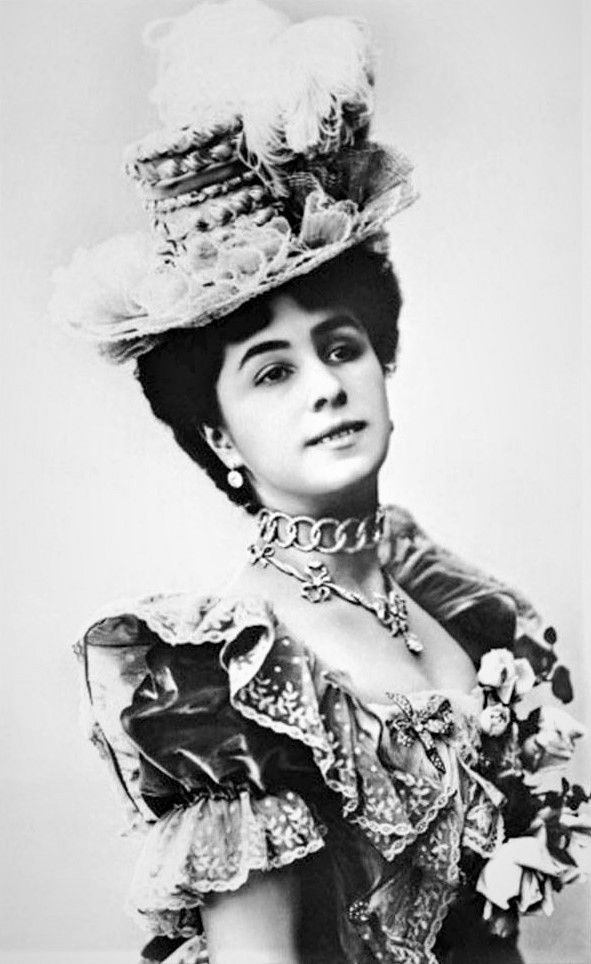
Mathilde Feliksovna Kschessinskaya; Credit – Wikipedia
- Patronymics: In Russian, a patronymic is the second name derived from the father’s first name: the suffix -vich means “son of” and the suffixes -eva, -evna, -ova, and -ovna mean “daughter of”.
Mathilde Feliksovna Kschessinskaya was one of the most famous ballerinas of the Maryinsky Ballet (now the Kirov Ballet) in St. Petersburg, Russia. She was awarded the title prima ballerina assoluta, traditionally reserved only for the most exceptional ballerinas of their generation. Mathilde was born on August 31, 1872, in Ligovo, Peterhof, Russia near St. Petersburg. She was the youngest of the four children and the second of the two daughters of Feliks Krzesiński (1821 – 1905) and Julia Dymiński (1830 – 1912) who were both dancers born in Warsaw, Poland. Her father was a dancer with the Maryinsky Ballet in St. Petersburg from 1853-1898, specializing in character dance, particularly the mazurka. Her mother was a former ballet dancer and the widow of the French dancer Théodore Ledé with whom she had nine children but only five survived infancy. Mathilde was baptized Maria Mathilde on November 20, 1872, at St. Stanisłav Roman Catholic Church in St. Petersburg but used her middle name professionally. There are several versions of her surname in Russian and Polish.

Mathilde’s father and mother; Credit- Wikipedia
Mathilde had three older siblings:
- Stanislav Feliksovich Kschessinsky (1864 – 1868), died in childhood
- Julia Feliksovna Kschessinskaya (1866 – 1969), married Baron Alexander Zeddeler, an officer in the Preobrazhensky Guards, friend and adjutant of Emperor Nicholas II, no children
- Josef Feliksovich Kschessinsky (1868 – 1942), married (1) Serafina Alexandrovna Astafieva, a fellow dancer, and later a ballet teacher in London, England, had one son, divorced (2) Celina Sprechinska, a fellow dancer, had one son and one daughter (3) Marie-Antoinette, surname unknown, died in 1942
Mathilde’s sister Julia and her brother Josef both graduated from the Imperial Ballet School School in St. Petersburg, Russia, (now the Vaganova Academy of Russian Ballet), the school of the Maryinsky Ballet. Both danced with the Maryinsky Ballet in St. Petersburg, Russia where they were both character dancers like their father. Julia and her husband fled from Russia during the Russian Revolution, and she died in France at the age of 103. Josef remained in Russia as it became the Communist Soviet Union and like his father, had a long career. In 1927, he received the title of Honored Artist of the Russian Soviet Federal Socialist Republic, and the following year, Josef gave his farewell performance. However, he did not retire but choreographed and staged ballets. In August 1942, Josef and his third wife both died during the Siege of Leningrad during World War II. Leningrad was the Soviet name for St. Petersburg.
When Mathilde was three-years-old, her father began teaching her dance and she often accompanied him to the theater. In 1880, eight-year-old Mathilde was accepted to the Imperial Ballet School. She studied and trained at the Imperial Ballet School for ten years, graduating in 1890.
The Imperial Family always attended the graduation performances of the Imperial Ballet School and so in the audience was Alexander III, Emperor of All Russia and his family including his son and heir the future Nicholas II, Emperor of All Russia. The Imperial Family watched as Mathilde performed a pas de deux from La Fille Mal Gardée with a male graduating student. Afterward, the graduates were presented to the Imperial Family and Emperor Alexander III told Mathilde to “be the glory and adornment of our ballet.” At the post-performance supper, Emperor Alexander III insisted that Mathilde sit next to him and then motioned his son and heir Tsesarevich Nicholas Alexandrovich to sit on her other side – and so the seventeen-year-old Mathilde met the twenty-two-year-old Nicholas for the first time.
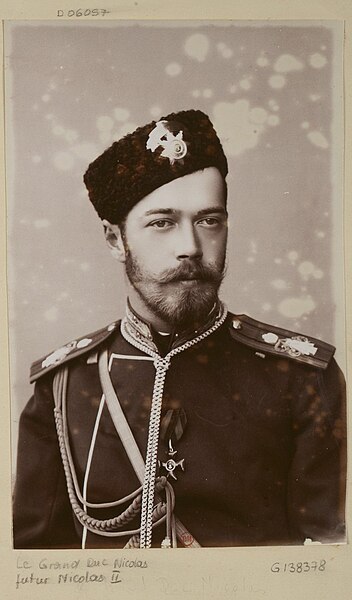
Tsesarevich Nicholas Alexandrovich in 1902, during his affair with Mathilde; Credit – Wikipedia
According to Mathilde’s later recollections, she had a relationship with Nicholas from 1890 – 1894. To facilitate their meetings, the imperial court rented a villa in St. Petersburg. The relationship ended when Nicholas became engaged to Princess Alix of Hesse and by Rhine in April 1894. Mathilde was generously compensated with the villa that had served as their meeting place and a sum of money. Nicholas II never met her in private after that, but he often watched her performances and always supported her discreetly whenever she needed it.

Credit – Wikipedia

Mathilde dancing the mazurka with her father; Credit – Wikipedia
After her graduation in 1890, Mathilde had a career with the Maryinsky Ballet until the Russian Revolution occurred in 1917. She appeared in solo roles in many ballets, including Princess Aurora in Sleeping Beauty, Nikia in La Bayadere, the Sugar Plum Fairy in The Nutcracker, the dual role of Odette and Odile in Swan Lake, and Giselle in Giselle, often partnered by Nikolai Legat or the legendary Vaslav Nijinsky. Mathilde also danced character roles with her father, most often they danced the mazurka as they did in the St. Petersburg premiere of Swan Lake.
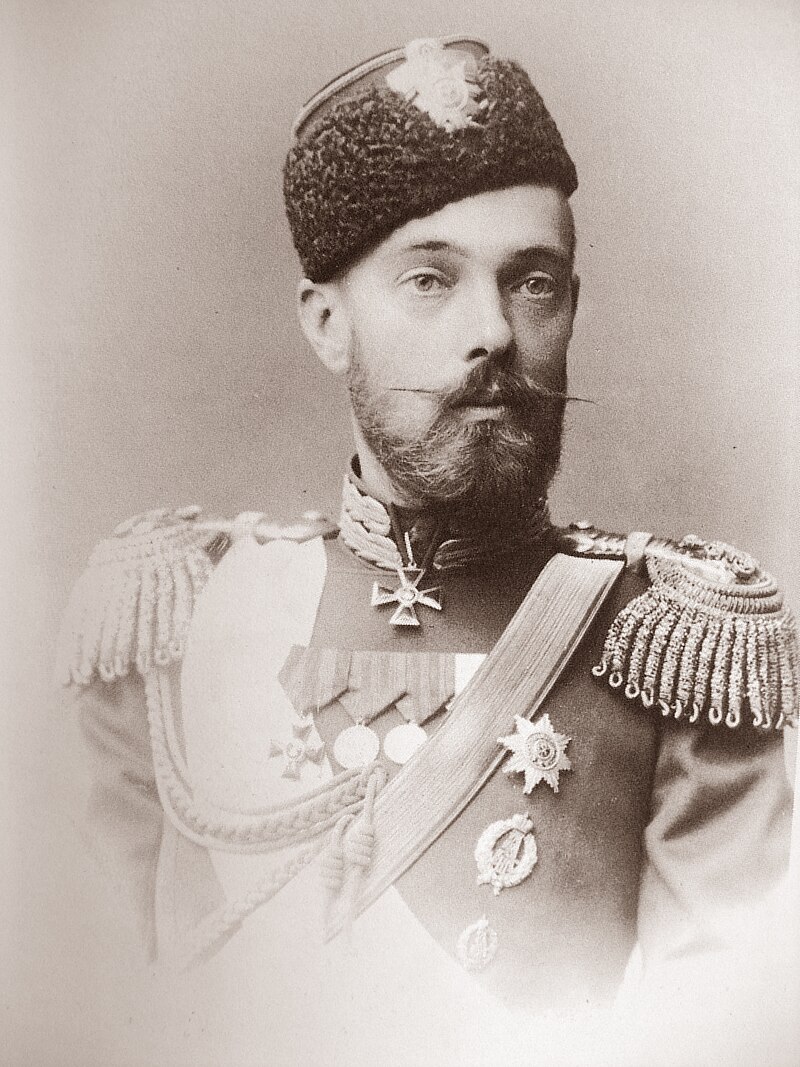
Grand Duke Sergei Mikhailovich, circa 1900; Credit – Wikipedia
When Tsesarevich Nicholas broke off his relationship with Mathilde, he asked his twenty-five-year-old first cousin once removed, Grand Duke Sergei Mikhailovich (1869 – 1918), to take care of her. From 1894 until the 1917 Russian Revolution, Grand Duke Sergei was Mathilde’s protector and lover and he provided generously for her. Mathilde, who was ambitious, used her connections to the Romanovs to promote her career. Grand Duke Sergei was president of the Imperial Theatres Society and used his influence to help promote Mathilde’s career with the Maryinsky Ballet. Sergei was devoted to Mathilde but she was not in love with him. He never married but he found that Mathilde provided him with a substitute for family life. Sadly, Grand Duke Sergei Mikhailovich was one of the five Romanovs executed by the Bolsheviks with Grand Duchess Elizabeth Feodorovna, born Princess Elisabeth of Hesse and by Rhine, the sister of Empress Alexandra Feodorovna, Emperor Nicholas II’s wife.

Grand Duke Andrei Vladimirovich in 1900, the year he met Mathilde; Credit – Wikipedia
At the same time, Mathilde was involved in a relationship with Grand Duke Sergei Mikhailovich, she was also involved with Grand Duke Andrei Vladimirovich (1879 – 1956), a first cousin of Emperor Nicholas II. Grand Duke Andrei was the youngest of the four sons and the fourth of the five children of Grand Duke Vladimir Alexandrovich, the second surviving son of Alexander II, Emperor of All Russia, and Marie of Mecklenburg-Schwerin (Grand Duchess Maria Pavlovna).
In February 1900, Grand Duke Andrei was invited by his brothers Grand Duke Kirill and Grand Duke Boris, to a dinner party at Mathilde’s home. Mathilde was attracted to the good-looking Grand Duke Andrei. As she was not in love with Grand Sergei, Mathilde pursued a relationship with Grand Duke Andrei. Mathilde and Andrei were lovers by July 1900. Grand Duke Sergei tolerated their affair, remaining a close and loyal friend to Mathilde but the relationship between the two grand dukes grew tense. They tried to avoid each other and remain civil while sharing the same woman for almost two decades.

Andrei, Mathilde, and her son Vladimir, circa 1905; Credit – Wikipedia
The relationship between the three became more complicated when Mathilde became pregnant. On June 18, 1902, Mathilde gave birth to a son. Both grand dukes were convinced that they were the infant’s father. The newborn was named Vladimir and was known as Vova in the family. A decree issued on October 15, 1911, gave nine-year-old Vladimir the patronymic Sergeevich (meaning son of Sergei) and the surname Krasinsky (according to family tradition, Mathilde’s family descended from Counts Krasinsky). Grand Duke Sergei took on the role of father and looked after Vladimir and Mathilde until his circumstances during the Russian Revolution no longer permitted him to do so. Meanwhile, Mathilde and Andrei continued their affair.

From left to right seated: Baron Alexander Zeddeler (Julia’s husband); Grand Duke Sergei Mikhailovich; Mathilde’s son Vladimir with his aunt Julia (Mathilde’s sister) behind him; Mathilde with two unidentified children; Grand Duke Andrei Vladimirovich,1909; Credit – Wikipedia
In 1916, Grand Duke Andrei had been one of the Romanov family members who objected to Empress Alexandra Feodorovna being in charge of the government while her husband Emperor Nicholas II was away at military headquarters during World War I. In December 1916, the murder of the controversial Grigori Yefimovich Rasputin who had befriended the family of Emperor Nicholas II, by Andrei’s first cousin Grand Duke Dmitri Pavlovich and Prince Felix Yusupov, the husband of his first cousin Princess Irina Alexandrovna, further fractured the Romanov family. When Andrei’s ambitious mother intrigued against Empress Alexandra Feodorovna, Emperor Nicholas II ordered the Grand Duchess Maria Pavlovna to temporarily leave Saint Petersburg. In early 1917, Grand Duke Andrei and his mother Grand Duchess Maria Pavlovna left for Kislovodsk, a spa resort town in the Caucasus, an area in Russia between the Black Sea and the Caspian Sea. Meanwhile, Nicholas II, Emperor of all Russia abdicated in March 1917 and the Russian Revolution was in its beginnings. In July 1917, Mathilde and her son escaped from the turmoil in Saint Petersburg and joined Andrei in Kislovodsk.
Andrei’s mother Grand Duchess Maria Pavlovna still hoped that her eldest son Kirill, would one day be Emperor of All Russia. When other Romanovs were leaving Russia, including her son Kirill and his family, Maria Pavlovna spent 1917-1918 with her son Boris, her son Andrei, and Mathilde along with her son Vladimir in the war-torn Caucasus. With the advance of the Bolsheviks, they fled to Anapa, Russia on the Black Sea, where they spent another fourteen months. When the Commander of the White Army told Maria Pavlovna that the Bolsheviks were going to win the Russian Civil War, she finally agreed to go into exile. On February 13, 1920, Maria Pavlovna, her son Andrei, his mistress Matilde, and her son Vladimir boarded an Italian ship headed to Venice. They made their way from Venice to Switzerland and then to France. Grand Duchess Maria Pavlovna did not live long in exile, dying in Contrexéville, France on September 6, 1920.

Russian Orthodox Church of St. Michael the Archangel in Cannes, France where Mathilde and Andrei were finally married; Credit – By Иерей Максим Массалитин – originally posted to Flickr as Завтра зима, CC BY-SA 2.0, https://commons.wikimedia.org/w/index.php?curid=9099069
After the death of his mother, Andrei felt that he would finally be able to marry Mathilde. Andrei asked for and received permission to marry Mathilde from his brother Grand Duke Kirill Vladimirovich, the Head of the Romanov Family since the murders of Emperor Nicholas II and his family, and from Empress Maria Feodorovna, the mother of Nicholas II. Mathilde and Andrei were married in a simple ceremony in the Russian Orthodox Church of St. Michael the Archangel in Cannes, France on January 30, 1921.
After the Russian Revolution, Mathilde and Grand Duke Andrei maintained that Andrei was the father of Mathilde’s son. In 1921, shortly after Mathilde and Andrei’s wedding, Vladimir was adopted by Grand Duke Andrei, and his patronymic was changed to Andreievich, son of Andrei. However, the question of Vladimir’s paternity remains unresolved but most historians believe that Grand Duke Andrei Vladimirovich, whom Vladimir resembled, was his father. On November 30, 1926, Grand Duke Kirill Vladimirovich, Head of the Romanov Family, gave Mathilde, who had converted to Russian Orthodoxy, and her son Vladimir, the title and surname of the Prince/Princess of Krasinsky. On July 28, 1935, Grand Duke Kirill Vladimirovich gave Mathilde and her son the surname Romanovsky-Krasinsky, and they were formally styled Princess Maria Romanovsky-Krasinsky and Prince Vladimir Andreievich Romanovsky-Krasinsky.

Cap-d’Ail, France where Mathilde and Andrei lived in exile for a while; Credit – Par Gilbert Bochenek — Travail personnel, CC BY-SA 3.0, https://commons.wikimedia.org/w/index.php?curid=18109477
Andrei and Mathilde were able to live more comfortably than some of the other exiled Romanovs. Before the Russian Revolution, Andrei had bought the Villa Alam in Cap-d’Ail, France, bordering Monaco, in Mathilde’s name, and so it did not have to be sold when Nicholas II had ordered all Romanov foreign property to be sold during World War I. To have a cash flow and maintain his standard of living, Andrei sold the jewel collection he inherited from his mother and he mortgaged Villa Alam. However, their standard of living did not last long. Both Mathilde and Andrei liked to gamble and lost huge sums of money at the gambling tables in Monte Carlo and the rest of their money was lost in the stock market crash of 1929. Mathilde and Andrei were forced to sell the Villa Alam. They moved to Paris where they lived in the 16th arrondissement.
Embed from Getty Images
Mathilde, on the right, at her dance school in Paris
In 1929, Mathilde opened a ballet school to provide income for the family. During the 1930s, Mathilde’s ballet school prospered, allowing her family to live a modest, yet comfortable life. Her students included some of the greatest ballet dancers of the 20th century including Dame Margot Fonteyn of Britain’s Royal Ballet, Dame Alicia Markova of Sergei Diaghilev’s Ballets Russes (Fonteyn and Markova are the only two British ballerinas to be recognized as a prima ballerina assoluta), André Eglevsky who danced with the Ballet Russe de Monte Carlo, the American Ballet Theatre and the New York City Ballet, Tatiana Riabouchinska who danced with the Ballet Russe de Monte Carlo, and Tamara Toumanova who also danced with the Ballet Russe de Monte Carlo (Riabouchinska and Toumanova were two members of the famous trio called the Baby Ballerinas).

Grand Duke Andrei Vladimirovich between his wife Mathilde and his first cousin Grand Duchess Maria Pavlovna in Paris. 1953; Credit – Wikipedia
As Andrei aged, his health worsened as did the family finances. Andrei and Mathilde were forced to sell their home in Paris and rent instead. They relied on financial aid from Andrei’s nephew Grand Duke Vladimir Kirillovich, the Head of the Romanov Family, and some of Mathilde’s friends and former students, such as British ballerina Margot Fonteyn. On October 31, 1956, Grand Duke Andrei Vladimirovich died at the age of 77 in Paris, France. Mathilde survived him by fifteen years, dying in Paris on December 6, 1971, at the age of 99. Mathilde and Andrei’s son Vladimir never married. He died in Paris, France on April 23, 1974, aged 71. Vladimir was buried with his parents at the Sainte-Geneviève-des-Bois Russian Cemetery in Paris, France.

Grave of Andrei, Mathilde and their son Vladimir; Credit – Автор: Muumi – собственная работа, CC BY-SA 4.0, https://commons.wikimedia.org/w/index.php?curid=62393803
This article is the intellectual property of Unofficial Royalty and is NOT TO BE COPIED, EDITED, OR POSTED IN ANY FORM ON ANOTHER WEBSITE under any circumstances. It is permissible to use a link that directs to Unofficial Royalty.
Works Cited
- En.wikipedia.org. 2020. Grand Duke Andrei Vladimirovich Of Russia. [online] Available at: <https://en.wikipedia.org/wiki/Grand_Duke_Andrei_Vladimirovich_of_Russia> [Accessed 9 July 2020].
- En.wikipedia.org. 2020. Grand Duke Sergei Mikhailovich Of Russia. [online] Available at: <https://en.wikipedia.org/wiki/Grand_Duke_Sergei_Mikhailovich_of_Russia> [Accessed 9 July 2020].
- En.wikipedia.org. 2020. Mathilde Kschessinska. [online] Available at: <https://en.wikipedia.org/wiki/Mathilde_Kschessinska> [Accessed 9 July 2020].
- Hall, Coryne, 2005. Imperial Dancer: Mathilde Kschessinska And The Romanovs. Thrupp: Sutton Publishing.
- Pl.wikipedia.org. 2020. Matylda Krzesińska. [online] Available at: <https://pl.wikipedia.org/wiki/Matylda_Krzesi%C5%84ska> [Accessed 9 July 2020].
- Ru.wikipedia.org. 2020. Андрей Владимирович (Великий Князь). [online] Available at: <https://ru.wikipedia.org/wiki/%D0%90%D0%BD%D0%B4%D1%80%D0%B5%D0%B9_%D0%92%D0%BB%D0%B0%D0%B4%D0%B8%D0%BC%D0%B8%D1%80%D0%BE%D0%B2%D0%B8%D1%87_(%D0%B2%D0%B5%D0%BB%D0%B8%D0%BA%D0%B8%D0%B9_%D0%BA%D0%BD%D1%8F%D0%B7%D1%8C)> [Accessed 9 July 2020].
- Ru.wikipedia.org. 2020. Кшесинская, Матильда Феликсовна. [online] Available at: <https://ru.wikipedia.org/wiki/%D0%9A%D1%88%D0%B5%D1%81%D0%B8%D0%BD%D1%81%D0%BA%D0%B0%D1%8F,_%D0%9C%D0%B0%D1%82%D0%B8%D0%BB%D1%8C%D0%B4%D0%B0_%D0%A4%D0%B5%D0%BB%D0%B8%D0%BA%D1%81%D0%BE%D0%B2%D0%BD%D0%B0> [Accessed 9 July 2020].
- Ru.wikipedia.org. 2020. Кшесинский, Иосиф Феликсович. [online] Available at: <https://ru.wikipedia.org/wiki/%D0%9A%D1%88%D0%B5%D1%81%D0%B8%D0%BD%D1%81%D0%BA%D0%B8%D0%B9,_%D0%98%D0%BE%D1%81%D0%B8%D1%84_%D0%A4%D0%B5%D0%BB%D0%B8%D0%BA%D1%81%D0%BE%D0%B2%D0%B8%D1%87> [Accessed 9 July 2020].
- Ru.wikipedia.org. 2020. Кшесинский, Феликс Иванович. [online] Available at: <https://ru.wikipedia.org/wiki/%D0%9A%D1%88%D0%B5%D1%81%D0%B8%D0%BD%D1%81%D0%BA%D0%B8%D0%B9,_%D0%A4%D0%B5%D0%BB%D0%B8%D0%BA%D1%81_%D0%98%D0%B2%D0%B0%D0%BD%D0%BE%D0%B2%D0%B8%D1%87> [Accessed 9 July 2020].
- Ru.wikipedia.org. 2020. Сергей Михайлович. [online] Available at: <https://ru.wikipedia.org/wiki/%D0%A1%D0%B5%D1%80%D0%B3%D0%B5%D0%B9_%D0%9C%D0%B8%D1%85%D0%B0%D0%B9%D0%BB%D0%BE%D0%B2%D0%B8%D1%87> [Accessed 9 July 2020].

























